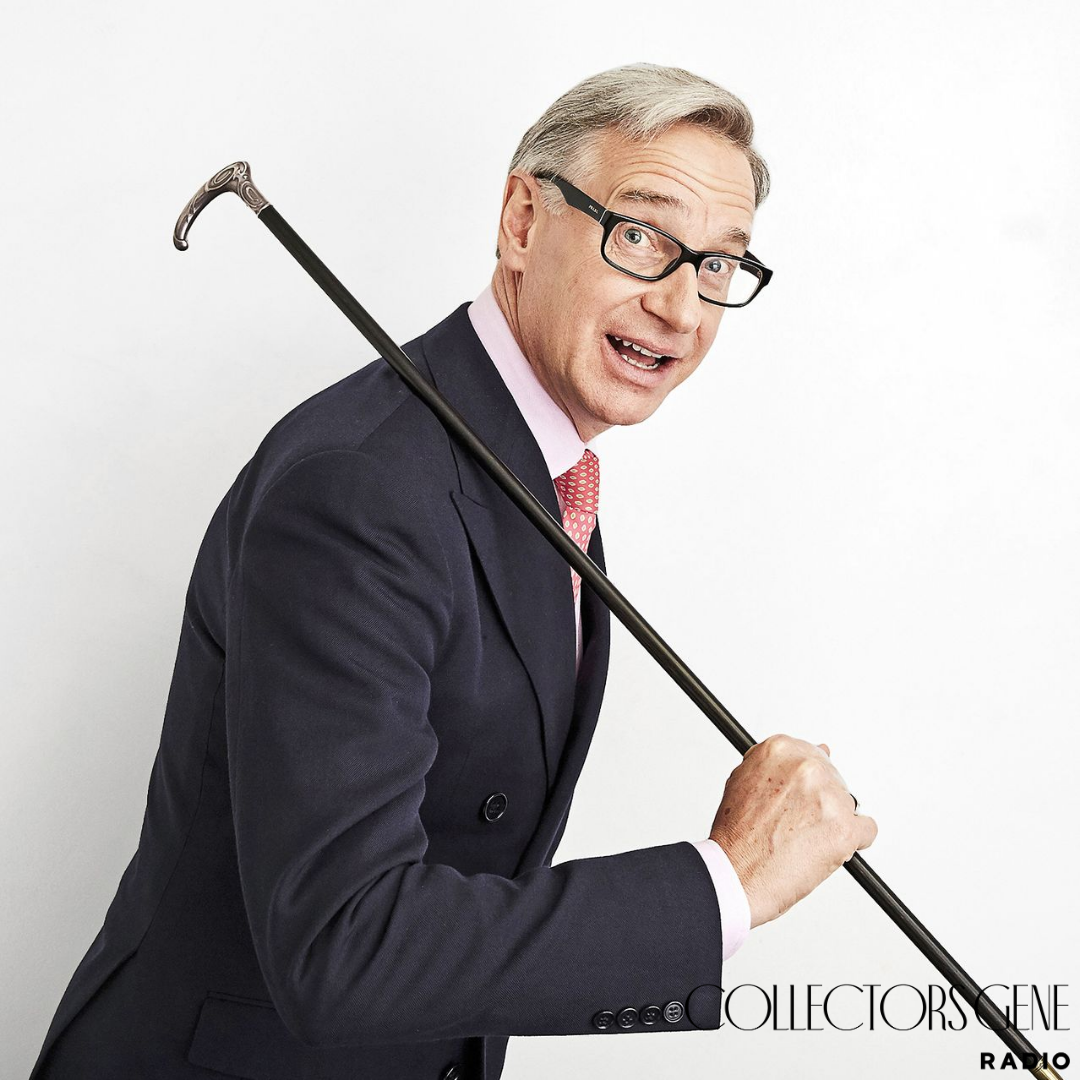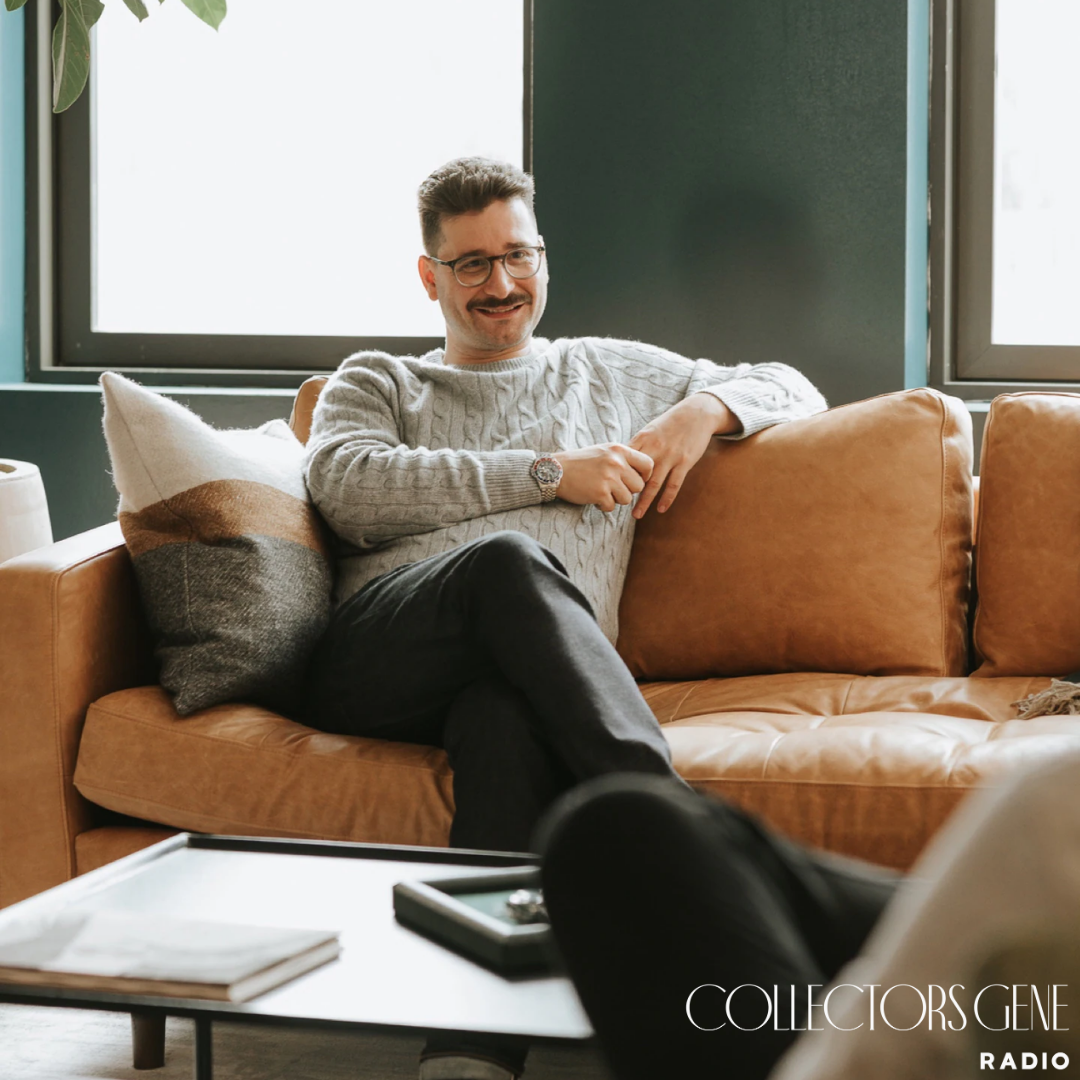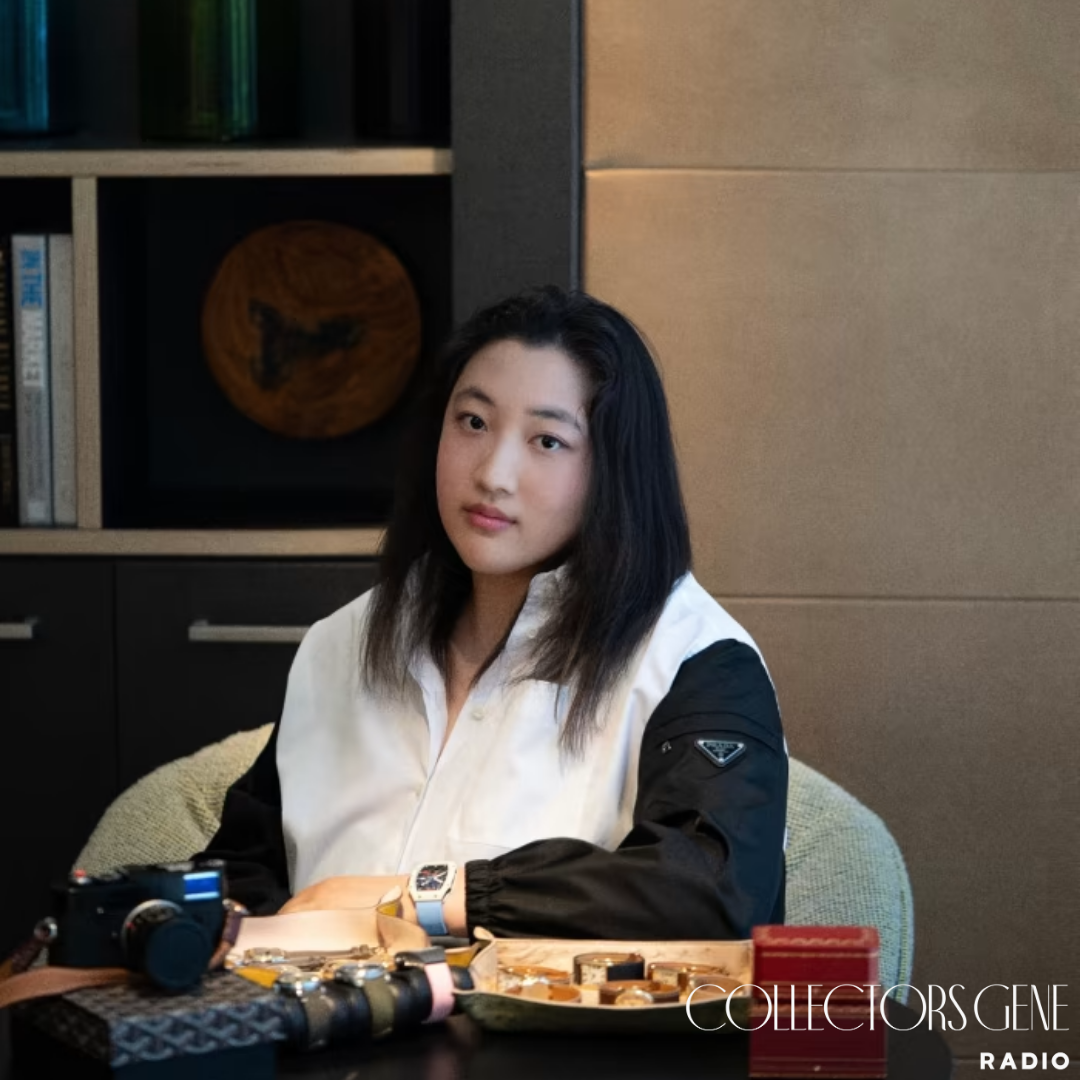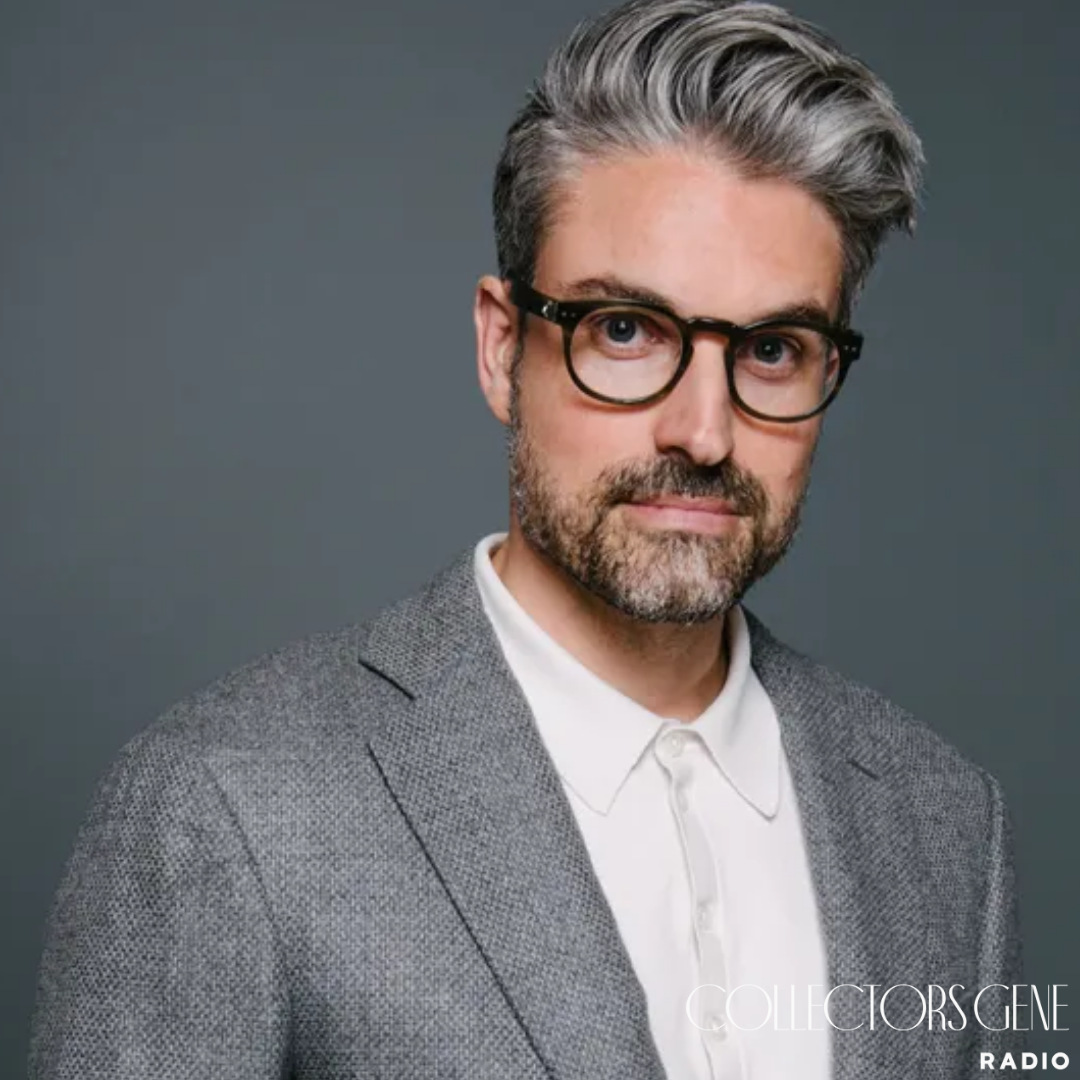Some collectors chase rarity, others chase history. Paul Feig chases elegance. You might know him as the director behind Bridesmaids, Spy, A Simple Favor, The Office, and most recently The School for Good and Evil. What you might not know is that he’s also a man committed to preserving rituals that many of us left behind long ago. For Paul, collecting isn’t about amassing objects to tuck away. It’s about living well and looking the part while you do it.
Where Hollywood has embraced sneakers, hoodies, and “quiet luxury,” Paul remains unapologetically old-school. On set, he’s in bespoke Savile Row suits, silk ties, often with a walking stick in hand. He put it perfectly: “If I got on a ship and the captain was wearing sweatpants, I’d get off the ship.” Directing, in his mind, requires dressing like one. That sense of intention runs through everything he collects, suits, walking sticks, cocktail gear, even the occasional watch.
Cocktail Time and the Pleasure of Ritual
Paul’s love of ritual became especially visible during the pandemic. For 100 nights straight, he hosted Instagram Live cocktail hours, always dressed in a suit, mixing drinks while chatting with viewers. What could have been a gimmick turned into something people looked forward to daily. Out of that came Cocktail Time, a book that’s part recipe collection, part memoir, and part life philosophy.
He approaches cocktails the way earlier guests like Jason Fried approach watches: not as commodities, but as touchpoints of daily ritual. Vintage highball glasses, whimsical martini stems, and even his own gin brand, Artingstall’s, are part of that pursuit. For Paul, drinking well is about craft, context, and enjoyment. It’s collecting but in liquid form.
Dressing the Part
Paul’s origin story with suits starts young. At eight years old, his mother took him to Saks Fifth Avenue in Detroit, where he walked out with a plaid Pierre Cardin three-piece. It barely lasted a season before he grew out of it, but the feeling of being transformed stuck with him.
That sense of transformation explains why, even in Hollywood meetings where executives wore jeans and sneakers, Paul kept showing up in tailored suits. He didn’t want to look younger than he was. He wanted to look like he belonged in charge. Today, his wardrobe spans Anderson & Sheppard, Ralph Lauren Black Label, and countless other bespoke pieces. He modernizes old suits rather than discarding them, trims jackets, reworks proportions, and keeps them alive.
The accessories like the ties, pocket squares and cufflinks matter just as much but what really sets him apart are his walking sticks.
Walking Sticks as Identity
Paul owns roughly 100 walking sticks across his homes in Los Angeles, New York, and London. Bamboo, snakewood, silver-topped, skull-carved, they’re practical, not just decorative. If a piece isn’t functional, he won’t buy it.
There’s an art to carrying one. He remembers seeing someone swing theirs awkwardly, embarrassed. “The point is to own it,” he said, “let it become part of you.” He’s even woven them into his films, Charlize Theron in The School for Good and Evil, Blake Lively in A Simple Favor, Bill Murray in Ghostbusters.
For Paul, the cane is a way to expand the boundaries of menswear. Women’s wardrobes have endless possibilities, while men’s are bound by the suit. Walking sticks, like pocket squares or hats, are tools for expression.
Collecting Beyond Clothes
Suits and sticks may define his look, but Paul’s collecting impulse extends further. He’s drawn to anything with history and craftsmanship: vintage cocktail sets, watches, guitars, art. The thread is permanence. These aren’t disposable objects; they’re made to last, to be used, and to be passed along.
That philosophy echoes themes from earlier guests. Where John Edelman sees patina in furniture as proof of life, Paul sees a well-worn suit as just as valuable as a freshly pressed one. Where Todd Levin insists on living with his Blue Note records, Paul insists on sipping from vintage martini glasses rather than leaving them behind glass.
The Collectors Gene Rundown
The One That Got Away: A Deco-era walking stick with a bamboo shaft and latticework metal handle, bought in Paris but forgotten on a plane. He still thinks about it.
The On Deck Circle: Expanding his collection of vintage cocktail gear, especially Culver highball glasses and rare martini stems.
The Unobtainable: The Chuck Close portrait of Philip Glass at MoMA. Every trip to New York includes a pilgrimage to see it, wishing he could somehow bring it home.
The Page One Re-Write: If not suits and sticks, Paul would collect top hats. The old beaver fur ones, shaped with century-old molds, fascinate him.
The GOAT: For Paul, the greats aren’t necessarily collectors but craftspeople. The tailors, glassmakers, and artisans who make the objects is who he admires.
The Hunt or The Ownership: He admits he’s more about ownership. The chase stresses him out. The real joy comes from having the piece, using it, and letting it become part of daily life.
Do You Feel That You Were Born With The Collector’s Gene?: Without hesitation: yes. He calls himself “toxic” about new obsessions. Once he’s hooked, he’s all in.
Closing Thoughts
Paul Feig collects the way he directs: with intention, style, and an eye for detail that elevates the ordinary. His wardrobe, his cocktail bar, his walking sticks aren’t props, they’re part of how he moves through the world.
What I find most compelling about Paul is that he reminds us collecting isn’t always about vaults and safes. Sometimes it’s about a tie you wear until it frays, a walking stick that follows you onto a film set, or a cocktail ritual that turns an ordinary night into something memorable.
Like Barry Friedman’s blankets or Alex Hassan’s Ghurka bags, Paul’s suits and sticks tell stories. They aren’t just objects. They’re companions, signals, and artifacts of a life lived with care.





